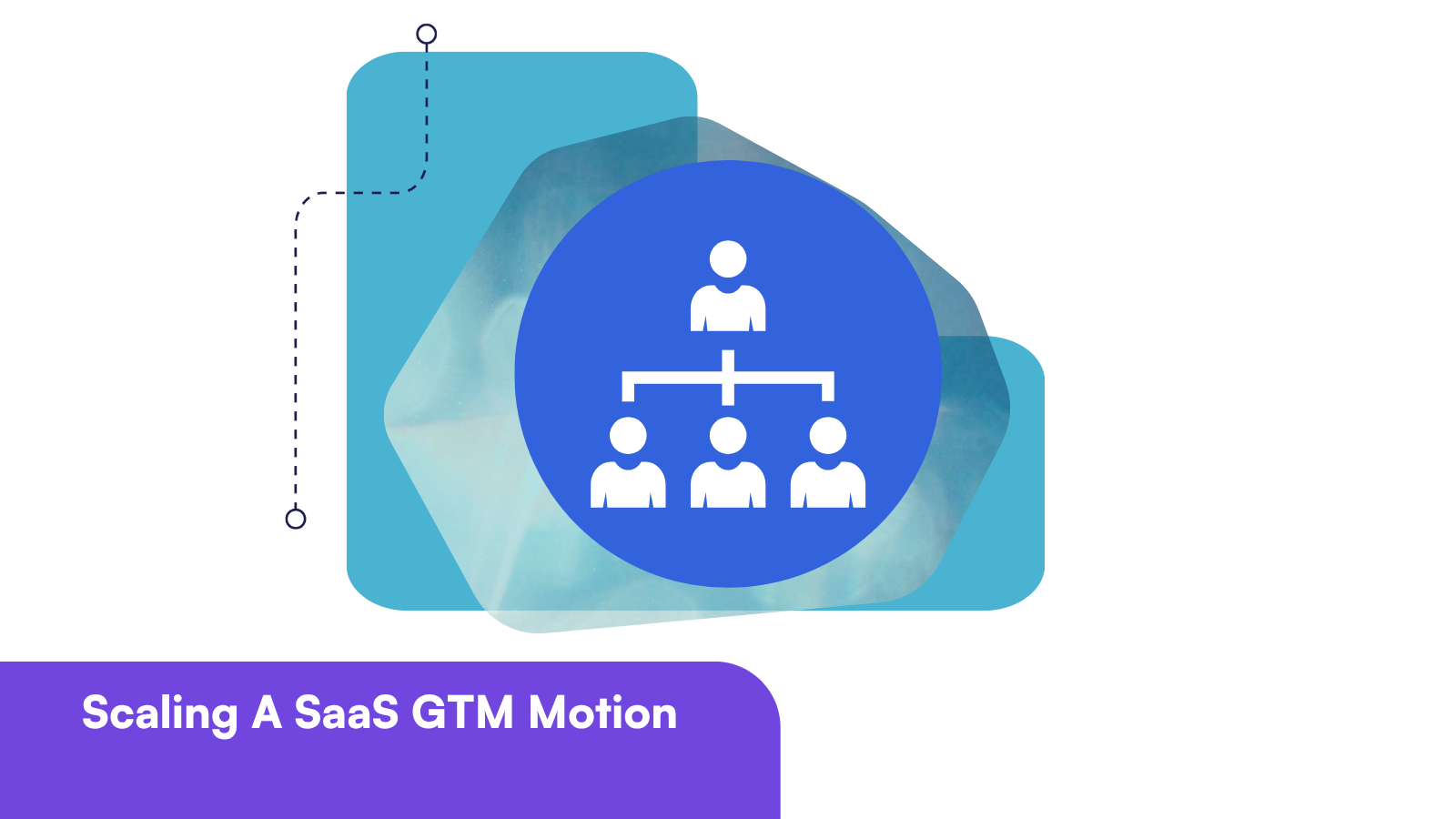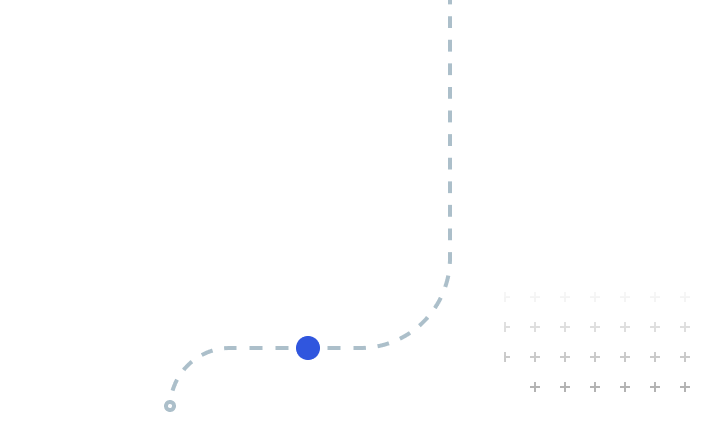
Most SaaS leaders underestimate the complexity and timeline required to scale their GTM teams effectively. They assume that additional resources can be available in near real-time, only to find themselves scrambling to fill personnel gaps when growth stalls or quotas are missed. The reality is far more nuanced and requires the same level of strategic planning that goes into product development or capital allocation.
There’s one critical element that can make or break even the best-designed GTM strategy: Understanding and, more importantly, mastering what we call the hiring curve.
In a rapidly scaling SaaS environment, failing to understand your hiring curve isn’t just an operational inconvenience; it’s a direct threat to predictability, growth targets, and ultimately, value creation.
What Exactly Is the Hiring Curve?
The hiring curve represents the total time required from the moment you decide to add new headcount to the time those new employees are producing meaningful results for the company. It’s not just about how long it takes to hire someone, but it encompasses the entire new-hire journey, from recognizing a need to achieving full productivity.
Most leaders drastically underestimate this timeline. They think about hiring in terms of weeks, when the reality is often measured in quarters.
The Two Critical GTM Bottlenecks Impacted By The Hiring Curve
Before diving into the mechanics of the hiring curve, it’s essential to understand the two primary bottlenecks that can cripple any GTM motion.
Lead Gen Bottleneck
Leads are the lifeblood of any sales organization, sourced through marketing programs or outbound SDR or AE efforts. Without sufficient lead gen capacity, even the most talented sales team will struggle to hit their numbers.
The lead gen bottleneck becomes critical as you scale because new AEs need a steady flow of qualified opportunities to achieve quota attainment and be an ROI-positive investment.
Deal Closing Bottleneck
Conversely, having an abundance of leads means nothing if there’s insufficient capacity to work and close the created opportunities effectively. This bottleneck emerges when marketing programs are generating more leads than the sales team can handle, or when lead qualification processes create a backlog that overwhelms AEs.
The hiring curve directly impacts a company’s ability to manage both bottlenecks. Poor hiring curve management means you’ll either have too many leads and not enough closers, or too many closers sitting idle, waiting for qualified opportunities. Either scenario destroys the predictability and efficiency we’ve emphasized throughout this GTM series.
Illustrating The Importance Of The Hiring Curve
Let’s examine two companies with identical growth targets to illustrate why understanding the hiring curve is critical.
Company A: The Typical Approach
Company A is growing rapidly for its scale and stage. In January, leadership realizes the need to add three new AEs to support aggressive Q2 and Q3 growth targets. The team assumes the resources can be hired quickly and that those resources can meaningfully contribute by March.
Here’s what actually happens:
- January: Decision made to hire three AEs
- February: Job posting goes live, initial candidates start interviewing
- March: Offers extended, candidates negotiate and accept
- April: New hires start, begin onboarding
- May: New hires complete initial training, start shadowing
- June: New hires get first territory assignment, begin independent work
- July: One new hire closes first deal, one new hire quits
- August: Two remaining new hires begin to show consistent performance
By the time Company A’s new AEs are contributing meaningfully, Q2 is over, Q3 is halfway done, and only two new AE’s remain. The company misses its growth targets, burns through cash faster than expected, and leadership scrambles to understand what went wrong, all while falling further behind on future quarters.
Company B: Strong Understanding of the Curve
Company B has the same January realization but approaches the curve differently. Leaders recognize that meaningful AE productivity takes 6-8 months from initial decision to meaningfully impact new AE bookings. Working backward from their Q3 targets, they realize they should have started the hiring process in Q3 of the previous year.
Since they can’t change the past, leadership makes three critical adjustments:
- Immediately adjust Q2 and Q3 operations based on current capacity to ensure goal attainment (more to come on this in our next piece of content)
- Immediately accelerate the hiring process to begin recruiting for Q4 and Q1 of the following year
- Target hiring four AE’s, expecting that one will not meet the bar
Company B manages expectations appropriately, maintains predictable growth within capacity constraints, and positions for accelerated growth once new resources are fully productive.
The difference? Company B treats hiring as a strategic process with long lead times, while Company A treats it as a tactical response to immediate needs.
The Reality of Hire Success Rates
Here’s an uncomfortable truth that many GTM leaders don’t want to acknowledge: many reps won’t make it beyond the first six months. In fact, hiring and ramping success rates for quota-carrying sales roles can be as low as 50%, even with strong hiring processes.
That reality has profound implications for hiring curve planning. If you need three productive AEs and historically achieve a 50% success rate, you may need to hire six people to get three successful performers. A buffer extends your hiring timeline and increases your investment, but becomes absolutely necessary to achieve predictable results.
Based on experience working with many SaaS companies, building in a 30% capacity buffer is a reasonable starting point; however, that number should be adjusted based on historical performance and the maturity of hiring and onboarding processes.
The Six-Step Process for Mastering Your Hiring Curve
Transforming hiring from a reactive scramble to a predictable strategic process requires systematic documentation and planning. Here are the steps you need:
Step 1: Map the Complete Hiring Process
Document every step of your hiring process for each role type in your GTM motion. For example, your hiring curve might include:
- Recognize the need for additional capacity
- Define role requirements and compensation
- Engage a recruiter or internal recruiting resources
- Source and screen candidates
- Conduct first-round through final-round interviews
- Perform reference checks and negotiate compensation
- Complete onboarding and initial training
- Enact job shadowing and skill development
- Assign territory and independent work
- Ramp to full productivity
Each step takes time, and some can be parallelized while others are sequential. Understanding this flow is critical for accurate timeline planning.
Step 2: Analyze Historical Ramp Time
Review your last 10 – 15 hires for each role type and analyze their time to productivity. How long did it take them to close their first deal? When did they achieve 50% of quota? When did they consistently achieve 100% of their quota?
This historical analysis becomes the foundation for your future planning. Don’t rely on optimistic assumptions—use actual data from your organization. It will better set you and your company up for success.
Step 3: Analyze Success Rates of Historical Hires
Simultaneously analyze what percentage of hires achieve acceptable performance levels within reasonable timeframes, and be sure to include both voluntary and involuntary terminations in calculating the success rate. Utilize that success rate in planning for required hires to achieve the plan. Additionally, identify the traits that top-tier performers have in common and utilize these attributes as sourcing and screening components for new hires.
Step 4: Determine Resource Requirements
Based on your growth plans for the next 6 quarters, calculate exactly how many headcount resources you need in each role for every quarter (with your 30% buffer and the calculated success rate). This process requires connecting your revenue targets to headcount needs, thereby increasing the likelihood of achieving the plan, even in unforeseen circumstances.
Step 5: Apply the Hiring Curve to a Timeline
Working backward from when you need productive resources, overlay your hiring curve timeline to determine when each hiring process must begin. Remember to account for your success rate buffer – if you need two productive AEs in Q3, and your hiring process takes six months with a 50% success rate, you need to start hiring 3 – 4 candidates in Q4 of the previous year.
Step 6: Execute Catch-Up and Stay-Ahead Planning
Identify where you’re currently behind schedule and make operational changes immediately. GTM leaders should make catching up on the hiring curve one of their top priorities once they identify a weakness. For future quarters, get ahead and stay ahead of your hiring curve, which often means maintaining continuous recruiting efforts rather than hiring in batches. A few tactics can help fill the capacity gap in the short term while new AE’s are coming onboard:
- Allocate quota to team leaders, SEs, and VPs (likely former AEs with excellent experience)
- Allocate quota to SDRs with a primary focus on closing small accounts
Other Considerations
The hiring curve is a living process and isn’t static – each component can and should be adjusted and improved with focused effort:
Accelerating New Hire Ramp
Invest in comprehensive training programs, structured job shadowing, and effective mentorship systems. The faster you can get new hires to productivity, the shorter your hiring curve becomes. Also, remember the impact that expectations have on results. If an AE is expected to ramp into quota over a nine-month period, that hire is very unlikely to achieve an accelerated timeframe. On the other hand, if the new hire onboarding system is structured for success and a four-month expected ramp period is well communicated, the AE is much more likely to work with urgency and achieve that ramp timeline.
Building Recruiter Bench and In-House Capabilities
Maintain relationships with 3 – 5 recruiting partners who understand your business and can move quickly when needs arise. Keep job descriptions updated, compensation bands current, and interview processes streamlined. In a rapidly growing organization, the people you hire are everything. Hiring enough skilled employees quickly while maintaining a high bar is essential to creating a high-performance team.
Implementing Performance Improvement Programs (PIPs)
Though the idea might seem unrelated to the ramp curve, an effective PIP program is critical for high ongoing performance. A PIP program will highlight issues early, create clarity on minimum performance requirements, and facilitate timely mentorship, training, and support. Ultimately, a performance-oriented culture will result, and top performers will be easier to consistently hire over time, thereby increasing the success rate and shortening ramp time.
Final Thoughts: The Long-Term Impact of Mastering the Hiring Curve
GTM scalability ultimately comes down to knowing what resources you need and when. The hiring curve is perhaps the most critical, and most overlooked, component of this equation. When managed strategically, it becomes a powerful contributor to predictability and consistent budget achievement.
The companies that treat hiring as a long-term strategic process, rather than a short-term tactical response, consistently outperform their peers in growth predictability and capital efficiency. In an environment where talent acquisition is increasingly competitive and expensive, mastering the hiring curve is essential and ultimately unlocks a level of predictability that transforms how the business scales.
Reach out to the Sorenson Capital team if you’d like to discuss the hiring curve further!





